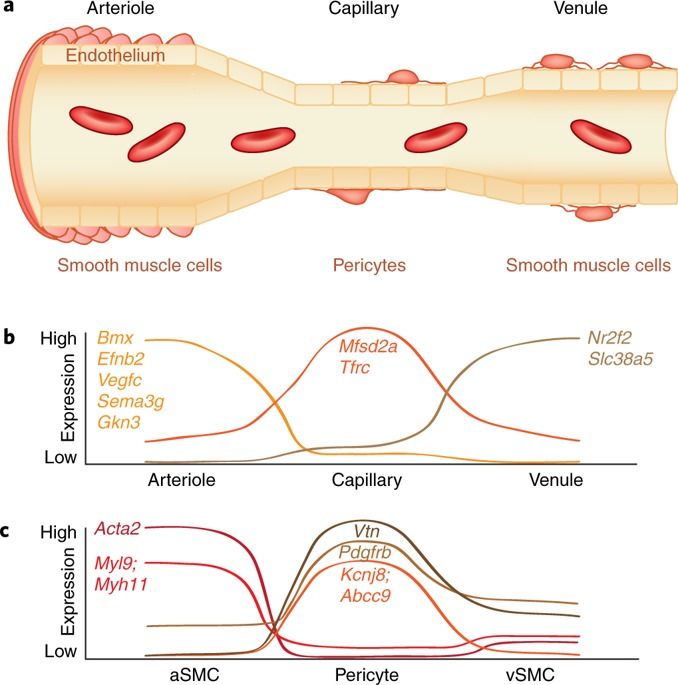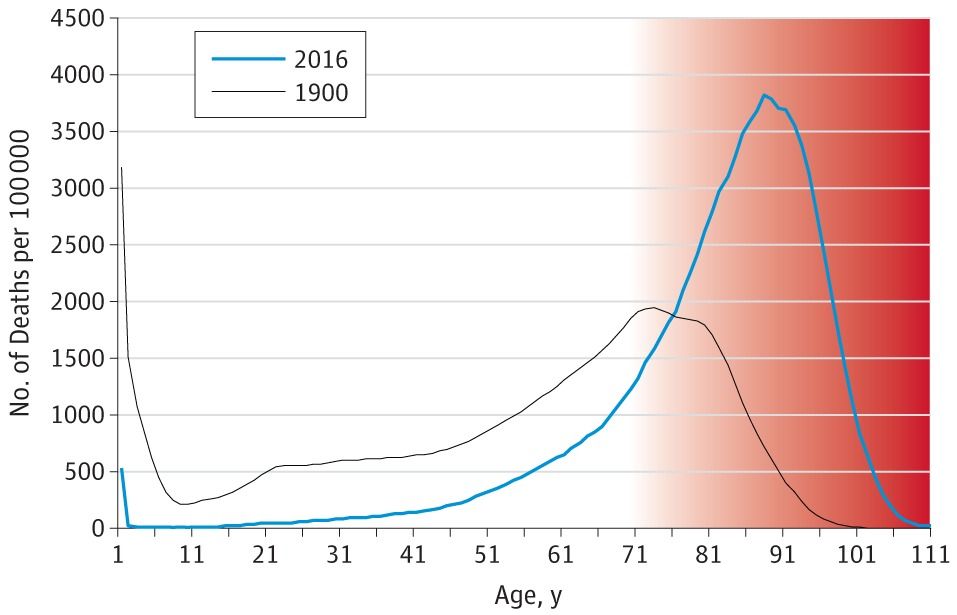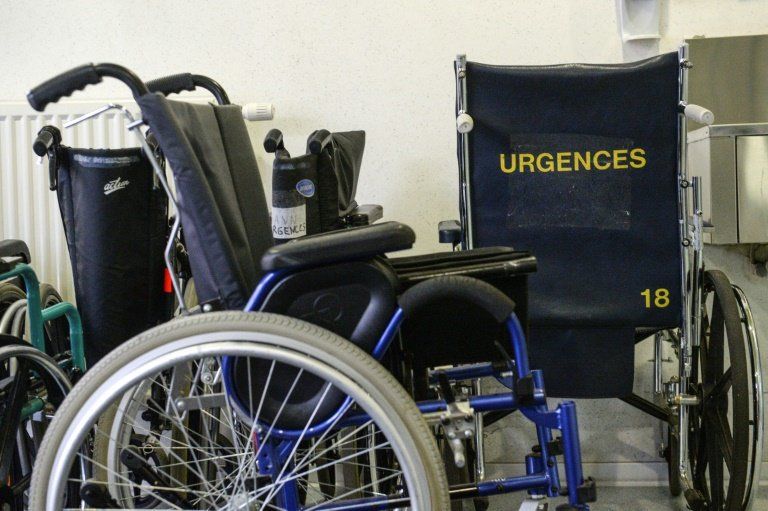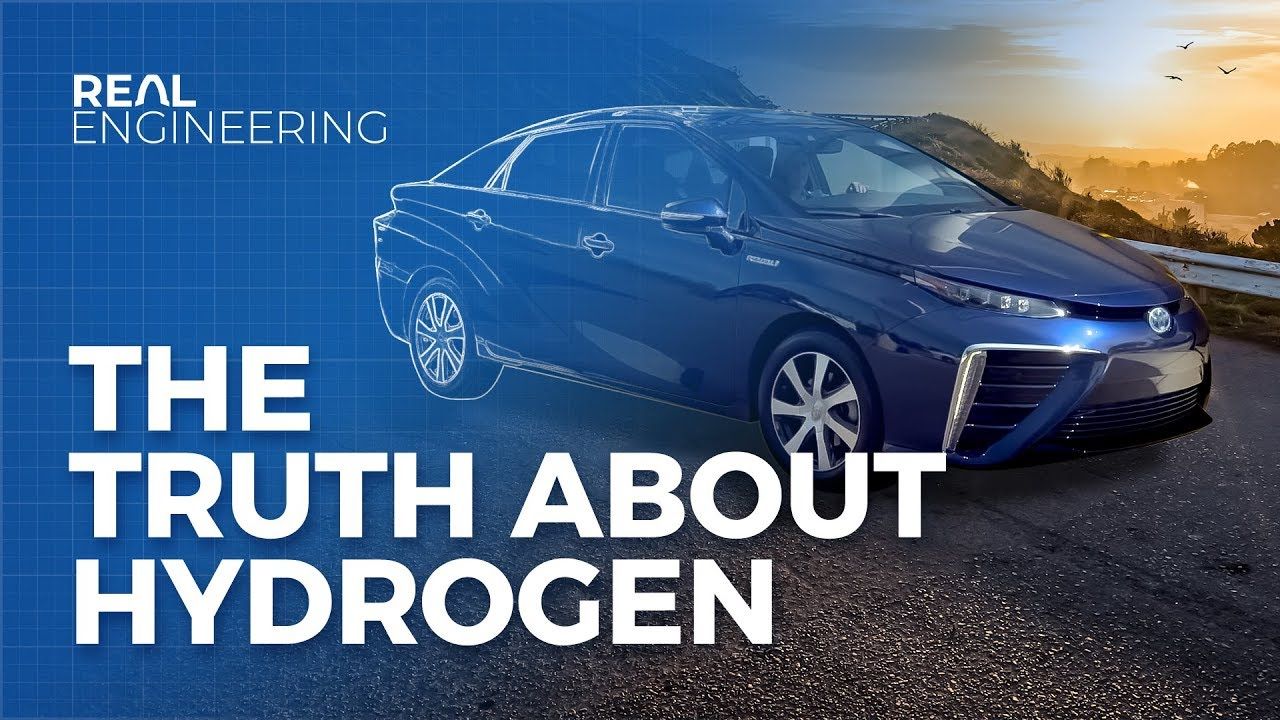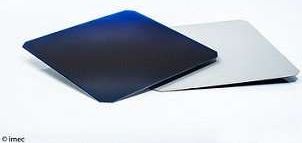Adequate supply of blood and structural and functional integrity of blood vessels are key to normal brain functioning. On the other hand, cerebral blood flow shortfalls and blood–brain barrier dysfunction are early findings in neurodegenerative disorders in humans and animal models. Here we first examine molecular definition of cerebral blood vessels, as well as pathways regulating cerebral blood flow and blood–brain barrier integrity. Then we examine the role of cerebral blood flow and blood–brain barrier in the pathogenesis of Alzheimer’s disease, Parkinson’s disease, Huntington’s disease, amyotrophic lateral sclerosis, and multiple sclerosis. We focus on Alzheimer’s disease as a platform of our analysis because more is known about neurovascular dysfunction in this disease than in other neurodegenerative disorders. Finally, we propose a hypothetical model of Alzheimer’s disease biomarkers to include brain vasculature as a factor contributing to the disease onset and progression, and we suggest a common pathway linking brain vascular contributions to neurodegeneration in multiple neurodegenerative disorders.
From Lifespan to Healthspan
Posted in futurism
Five years after he was paralysed in a snowmobile accident, a man in the US has learned to walk again aided by an electrical implant, in a potential breakthrough for spinal injury sufferers.
A team of doctors at the Mayo Clinic in Minnesota say the man, using a front-wheeled walker, was able to cover the equivalent of the length of a football pitch, issuing commands from his brain to transfer weight and maintain balance—all previously thought impossible for paralysed patients.
The man, now 29, severed his spinal cord in the middle of his back when he crashed his snowmobile in 2013. He is completely paralysed from the waist down, and cannot move or feel anything below the middle of his torso.
The Truth about Hydrogen
Posted in computing, engineering
Get 2 months of Skillshare for FREE using this link: https://skl.sh/realengineering13
Errors: I made an off hand comment about adding efficiencies in the video without thinking. This is obviously incorrect, but the final calculation does in fact multiply the efficiencies.
Credits:
Director: Stephanie Sammann (https://www.stephanie-sammann.com/)
Apparently, amyloid beta drives its own production in a vicious circle.
In a study at King’s College London, scientists have shown that a vicious circle in which the ill-famed amyloid-beta protein stimulates its own production might be a key factor in the etiology of neurodegeneration in Alzheimer’s disease; furthermore, a drug known as fasudil seems to be effective against amyloid-beta in a mice model of the disease [1].
Study abstract
In Alzheimer’s disease (AD), the canonical Wnt inhibitor Dickkopf-1 (Dkk1) is induced by β-amyloid (Aβ) and shifts the balance from canonical towards non-canonical Wnt signalling. Canonical (Wnt-β-catenin) signalling promotes synapse stability, while non-canonical (Wnt-PCP) signalling favours synapse retraction; thus Aβ-driven synapse loss is mediated by Dkk1. Here we show that the Amyloid Precursor Protein (APP) co-activates both arms of Wnt signalling through physical interactions with Wnt co-receptors LRP6 and Vangl2, to bi-directionally modulate synapse stability. Furthermore, activation of non-canonical Wnt signalling enhances Aβ production, while activation of canonical signalling suppresses Aβ production. Together, these findings identify a pathogenic-positive feedback loop in which Aβ induces Dkk1 expression, thereby activating non-canonical Wnt signalling to promote synapse loss and drive further Aβ production.
At today’s EU PVSEC conference, imec—the world-leading research and innovation hub in nanoelectronics, energy and digital technology and partner in EnergyVille—announced that its latest generation of large-area monofacial screen-printed rear-emitter nPERT cells feature a conversion efficiency of 23.03 percent, certified by Fraunhofer ISE CalLab. The nPERT (n-type Passivated Emitter and Rear Totally diffused) solar cells are made using an industry-compatible screen-printing process that has been designed as an upgrade of conventional pPERC (p-type Passivated Emitter and Rear Cell) processes. According to imec, its nPERT technology is projected to reach 23.5 percent efficiency by the end of this year, and there is a clear technology roadmap to eventually surpass 24 percent.
While p-type PERC solar cells are becoming mainstream in the PV industry, n-type PERT technology is being developed as a cost-effective contender that has a number of inherent advantages: Due to the absence of B-O complexes, n-type cells don’t suffer from light induced degradation (LID) and are less sensitive to metal impurities. That makes for cells that have the potential for a longer-term stability and a higher efficiency. Imec fabricated the M2-sized cells (area: 244.3 cm²) on its pilot line with industry-compatible tools and recipes, in a process that is an upgrade of the pPERC fabrication process, using a similar layout of an n+ region (Front Surface Field) on the illuminated side and a p+ region (as rear emitter) on the opposite side and adding a cost-effective boron diffusion.
“Until now, nPERT solar technology has not yet found the traction it deserves in the industry,” says Loic Tous, senior researcher at imec. “With these ever-improving results, which we achieved by applying knowledge gained from our bifacial nPERT project, we are now demonstrating the potential of nPERT technology. The advantages in stability and efficiency potential over p-type PERC cells, while using the same equipment with the addition of a Boron diffusion, make this a very promising technology for future manufacturing lines.”
